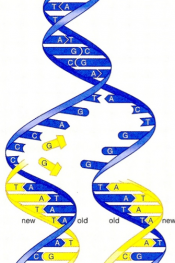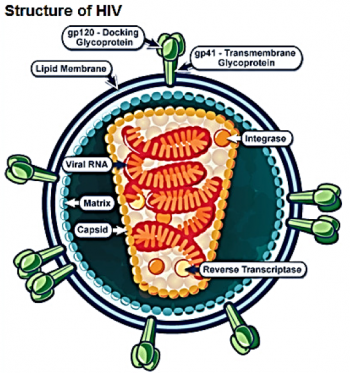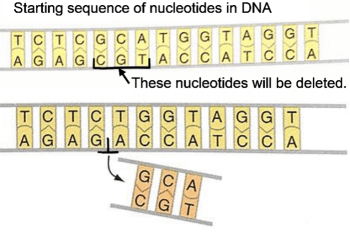
In this analysis and discussion activity, students learn the basics of DNA function, structure, and replication.
The sequence of nucleotides in a gene determines the sequence of amino acids in a protein, which determines the structure and function of the protein. Different versions of a gene give the instructions to make different versions of a protein, which can result in different characteristics.
Since many different proteins are needed for a cell to be alive, each cell needs a complete copy of the DNA with all of the genes. Therefore, before a cell divides, it needs to make a copy of all its DNA. Students analyze DNA replication to understand how the double helix structure of DNA, the base-pairing rules, and DNA polymerase work together to produce two identical copies of the original DNA molecule.
This activity can be used to introduce your students to key concepts about DNA or to review these concepts.

 © Serendip® 1994 - All rights reserved. Privacy Policy
© Serendip® 1994 - All rights reserved. Privacy Policy
 This analysis and discussion activity introduces students to the biology of HIV infection and treatment, including the molecular biology of the HIV virus lifecycle and the importance of understanding molecular biology and natural selection for developing effective treatments.
This analysis and discussion activity introduces students to the biology of HIV infection and treatment, including the molecular biology of the HIV virus lifecycle and the importance of understanding molecular biology and natural selection for developing effective treatments. In this minds-on analysis and discussion activity, students learn how a mistake in meiosis can result in Down syndrome. Students also analyze karyotypes to learn how other mistakes in meiosis can result in the death of an embryo. Finally, students consider how a health problem can be genetic, but not inherited.
In this minds-on analysis and discussion activity, students learn how a mistake in meiosis can result in Down syndrome. Students also analyze karyotypes to learn how other mistakes in meiosis can result in the death of an embryo. Finally, students consider how a health problem can be genetic, but not inherited. This activity is aligned with the Next Generation Science Standards. The attached files have the overview of key concepts, with descriptions of relevant learning activities and links to the activities.
This activity is aligned with the Next Generation Science Standards. The attached files have the overview of key concepts, with descriptions of relevant learning activities and links to the activities. 

